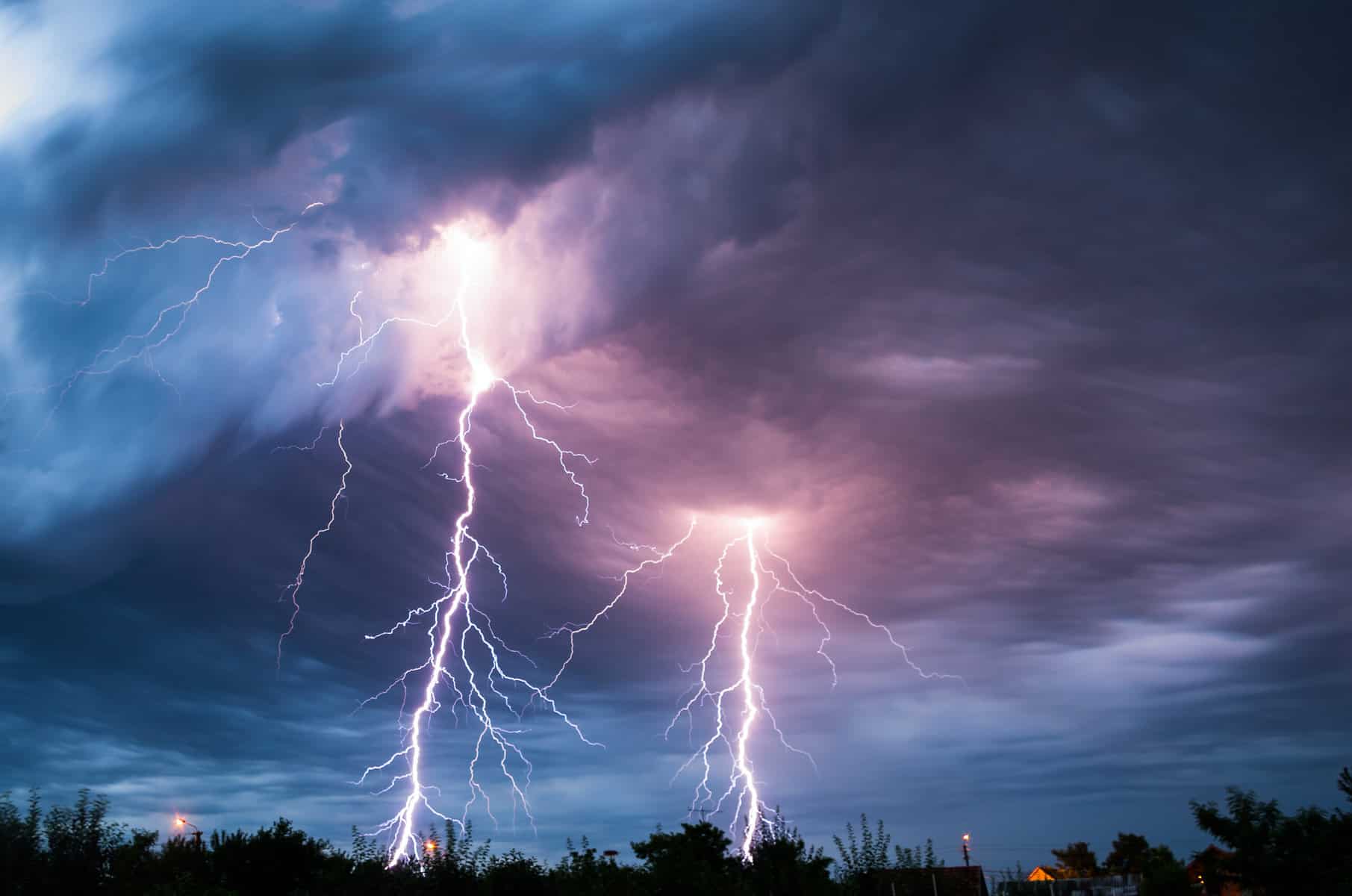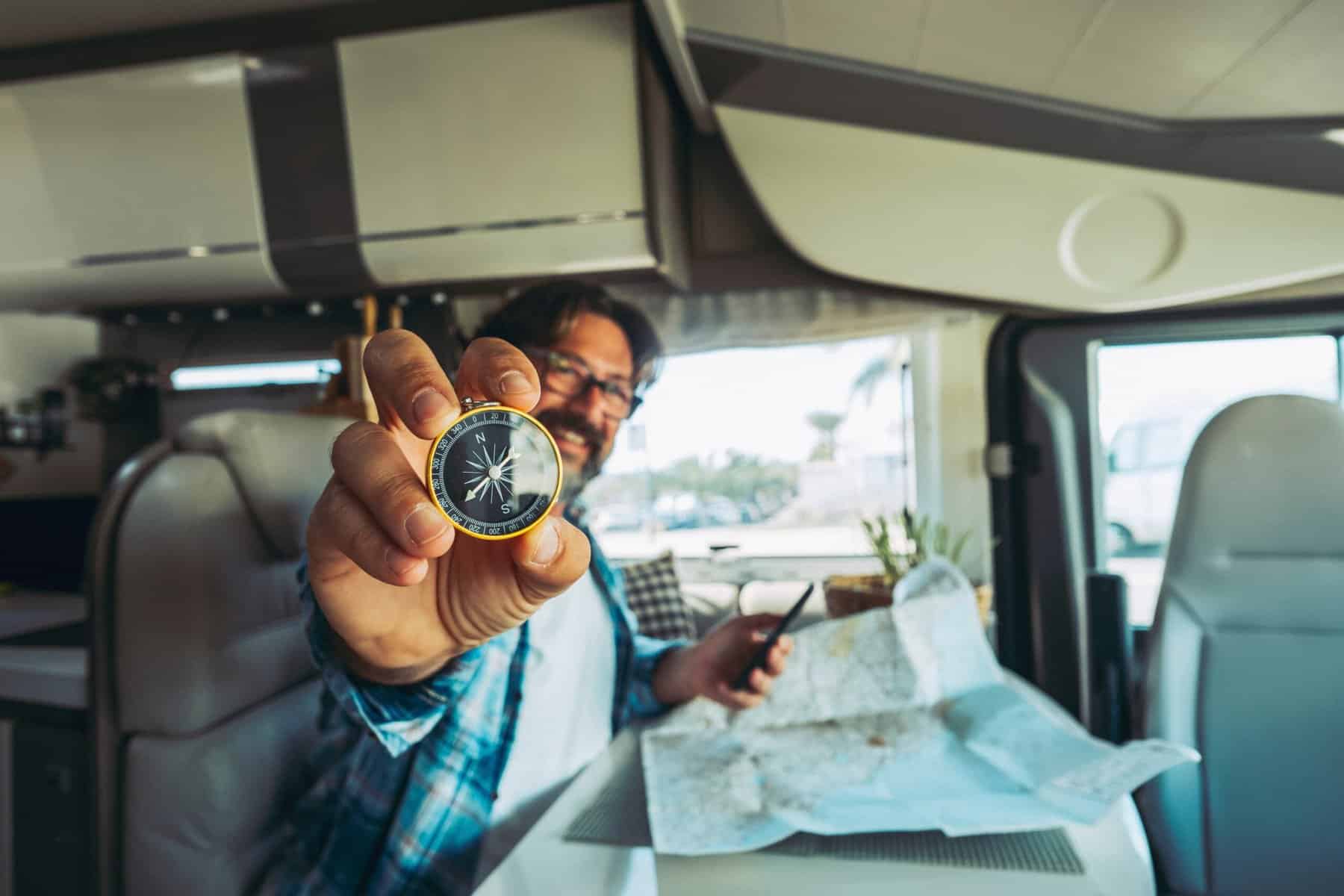You’ve done all of your research and you’ve finally pulled the trigger on the RV of your dreams! But, do you know how to drive an RV safely? You probably haven’t familiarized yourself with such a large vehicle, have you?
As soon as you get behind the wheel, you’ll notice that taking control of an RV is quite a bit different than your day to day vehicle.
The 12-Step Program to Drive an RV Safely
Most RVs are not particularly difficult to drive. But there are a few RV driving tips to keep in mind that will make your travels safer and more enjoyable.
Here are some extremely important points to run through before you hit the road as well as some safety points to keep in mind while you’re on the road.
1. Check your essentials
Many accidents are caused by simple forgetfulness: leaving doors unlatched, awnings up, or steps extended. Use a step-by-step checklist and conduct a final walk-around visual inspection before driving away. A pre-departure should include the following:
- Check propane level and fill if needed
- Check oil, transmission, and coolant levels
- Check tire inflation pressure and adjust as required
- Ensure all signal, four-way hazard, brake, running, and fog lights are operational
- Turn propane off at the tank if you’re not planning on running your refrigerator
2. Thorough inspection
Before leaving ensure you conduct a thorough inspection on your RV. Do a final 360-degree walk-around the RV before getting in the driver’s seat and leaving on your road trip.
- Check all doors to make sure they are properly latched, disconnect power, water, and sewer lines.
- Look for any leaks and ensure your propane and smoke detectors are in working condition.
- Always test your carbon monoxide detector to make sure it is working properly
Carbon monoxide poisoning symptoms are only noticeable when you’re awake, they include dizziness, vomiting, nausea, muscle twitching, headache, throbbing in the temples, weakness and sleepiness, and inability to think coherently.
3. Check your lights
- Prior to starting your day’s travel check the functioning of all signal lights, 4-way flashers, brake lights, and head lights
4. Adjust your mirrors
- Adjust the side-view mirrors to barely see the side of your RV
- Adjust the convex mirrors to include blind spots, keeping in mind that distances may be distorted
- Check your mirrors every 30 seconds
- Ensure that you’re driving within the painted lines
- Be aware of the traffic behind you and whether they are keeping up with you, preparing to pass, or falling back
5. Pay attention to the road
- DO NOT overdrive your visibility
- 90% of all driving decisions are visual based
6. Leave yourself an out
- Determine the lane of least resistance and safety
- Maintain safe following distances
- Leave room to change lanes when stopping behind another vehicle
- Is there a way out of here?
- DO NOT drive your RV into any place that you can’t see a way out of—especially if that RV is a large motorhome towing a car
- Plan your trip in advance so that you can avoid going through large cities during morning or late afternoon rush hour
- The best time to drive through major cities is early Sunday morning—during the workweek, you’re best to travel between 9 a.m. and 3 p.m.
8. Follow the RV driving rule of 20%
- Fully loaded RVs have slower acceleration and take longer to come to a full stop than autos
- To compensate, add 20 percent to everything you do, from increasing your following distance and judging if you have enough clearance to safely merging into traffic.
9. Know and post your height, width and length
Some of the most common RV accidents include hitting bridges, underpasses, and gas station overhangs. Post your exterior height, width, and total length in the motorhome or tow vehicle where it can easily be seen while driving.
- A major insurance claim is RVs hitting gas station overhangs, underpasses, and bridges
- Solution: Post your exterior height, width, and total length in the motorhome or tow vehicle where it can easily be seen while driving
- Height: Measure to the highest point such as air conditioner or satellite dish
- Width: Measure to the outermost points such as mirrors, awnings, or handles
- Length: Measure from the front of the vehicle to the end of the towed vehicle or trailer
10. One hour rest stop walk-around
Visually inspect your tow hitch connections and check for overheated and low tires every time you stop at a rest stop or refueling location. Pranksters have been known to remove pins from the hitch. Perform a walk-around that covers these visual points:
- Check to ensure that tires have not overheated
- Check tow bar or hitch and safety cables
- Ensure that hitch pins or bolts are still in place
- Check to ensure that the wiring harness is connected securely
- Look under the chassis for signs of oil or coolant leaks
- Check storage bay doors
11. Turn signals
- Turn signals are valuable for communicating your intentions to other drivers; if you don’t signal, other drivers have no way of knowing what you plan to do
- In an emergency pull completely off the road and use emergency flashers, flares, or some other emergency signaling device to warn oncoming traffic
12. Safely backing up an RV
Have the co-pilot get out of the vehicle and scan the site before backing up, checking for site obstructions, overhanging branches, levelness of site, and location of utilities.
- Adjust the mirrors to tilt down enabling you to see the lower rear corner of the RV
- The co-pilot should stand at the back of the site slightly to the side of the vehicle. Make sure that you can see the co-pilot in your side-mirror. The co-pilot should use hand signals that you both understand.
- Back in slowly and very carefully.
Conclusion About Learning How to Drive an RV Safely
The majority of drivers can adapt quite well to the increased size, height, and weight of an RV, but keeping alert, planning ahead, and driving cautiously remain top priority in the safe handling of your vehicle.



